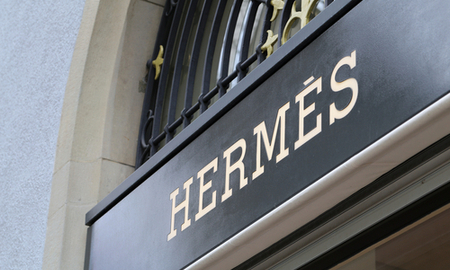Sign up for our free daily newsletter
YOUR PRIVACY - PLEASE READ CAREFULLY DATA PROTECTION STATEMENT
Below we explain how we will communicate with you. We set out how we use your data in our Privacy Policy.
Global City Media, and its associated brands will use the lawful basis of legitimate interests to use
the
contact details you have supplied to contact you regarding our publications, events, training,
reader
research, and other relevant information. We will always give you the option to opt out of our
marketing.
By clicking submit, you confirm that you understand and accept the Terms & Conditions and Privacy Policy
When consumers put on virtual reality glasses, they immerse themselves in imagined space, blurring the lines between the physical and digital worlds. Subconsciously, users lose the sense of being in the digital world as their new space becomes more and more real.
For brands, creating immersive luxury goods is a key trend that is fast-becoming a new standard in the industry. As immersive experiences grow, there are significant IP and licensing issues that need to be addressed.
Immersive luxury goods conquer the digital world
In the coming years, analogue objects such as bags, shoes, or jewellery will increasingly migrate into digital worlds such as the metaverse or online games. These objects will follow the next generations of consumers who spend a significant part of their waking hours in virtual realities. In the future, a luxury bag will not only be worn in the analogue world but will increasingly adorn personal avatars as virtual personifications of users in digital worlds.
Today, there are already manufacturers of immersive luxury: watchmakers who produce high-quality, high-priced analogue timepieces. These immersive luxury watches have an important twist: the buyer receives not only an analogue timepiece, but also an NFT with a digital image of their watch and a free app to use the digital watch’s features. On the one hand, the NFT can verify authenticity, allow discounts in e-commerce or provide access to exclusive events. It is also conceivable that an avatar in the metaverse could be assigned the same watch via the NFT.
Luxury goods are ideal test lenses. New technological developments can be better marketed to customers and amortised through high-priced products. When a trend catches on, the mass market can follow. Not surprisingly, the luxury industry has been one of the first to venture into the metaverse. Well-known luxury brands are opening digital flagship stores in the metaverse and providing digital outfits for avatars.
Extending legal IP strategy to digital worlds
These new immersive experiences raise a number of intellectual property issues. If a manufacturer offers its products physically as well as digitally, it must extend its IP strategy to the digital world. Thus, trademarks and copyright protected works can easily find their way into the metaverse. A commercial retailer could set up an online store in the metaverse and use luxury brands for virtual goods without permission. Loyal customers could create user-generated content (such as an image) depicting a third party's product design (as a protected work of applied art) and communicate it to the public in the metaverse. This process is further accelerated when users use artificial intelligence to create content: a copyrighted work may be selected by the AI and (unintentionally) appear in user-generated content.
Companies will therefore need to look at their existing licensing agreements, such as for freelance text, images, graphics and so on. They will need to review the territorial scope of those license agreements – works licensed in the EU, for example, may now be shown around the world (without permission). However, they will also need to consider whether use in the metaverse itself is licensed (at least as an unknown type of use) in older licence agreements. Further problems may arise from the bestseller clause: a design that has been fairly remunerated only for use in the real world is now being monetised a second time in the metaverse. In this case, the author might have a legal claim for additional remuneration.
Another option will be the use of ‘notice and action’ systems offered by various platforms. These procedures are based on the E-Commerce Directive and on the forthcoming Digital Services Act (Art. 6, 16 for host providers). If a company detects infringements, it can sufficiently notify the provider of the metaverse platform provider. After an internal review, the platform will immediately remove the content in justified cases. These systems have worked well, especially since the US Digital Millennium Copyright Act – which applies on US territory – has many parallels to the EU regulation. This leads to very similar notice and action practices in the western world.
Finally, it is important to consider whether the digital and physical products share a common (contractual) fate. Does the NFT ultimately document the sale of the physical bag, or can both products have a completely independent fate? While the physical bag remains with the seller in the ‘real’ world, the seller resells the NFT in the metaverse, for example because it has increased in value (unlike the physical bag). These are issues closely related to branding and distribution exclusivity and need to be addressed in a licensing annex to the purchase agreement.
Dr. Niels Lutzhöft, LL.M. is at partner in Bird & Bird’s Frankfurt office. He is a strategic advisor and litigator for media and life science clients at the crossroads of IP and sector-specific regulation and can be reached at [email protected]. Dr. Simon Hembt is an associate whose practice focuses on intellectual property, copyright and media-specific regulation – with a key focus on games, advertising and digital entertainment. He can be reached at [email protected].
Email your news and story ideas to: [email protected]












